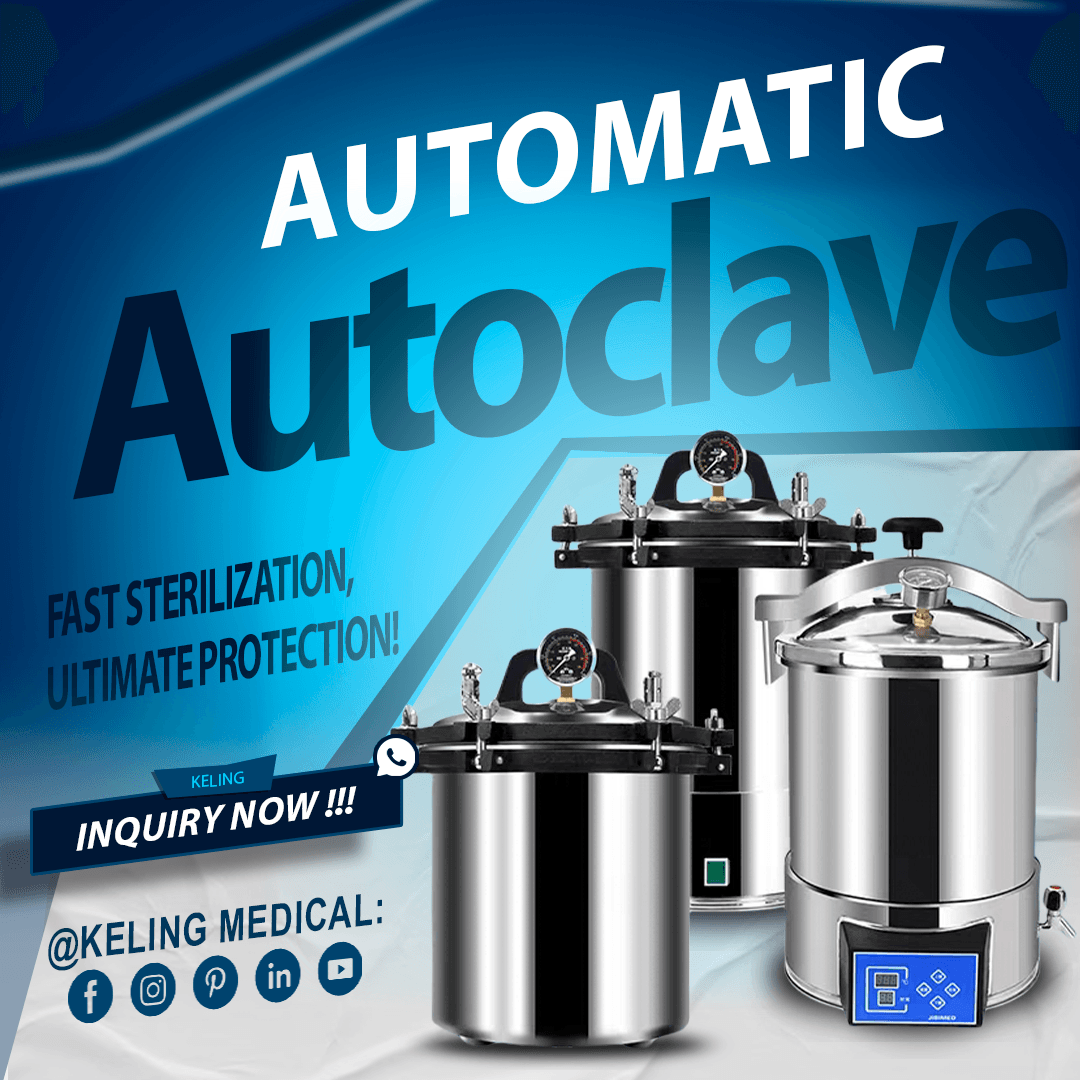
This medical device uses elevated temperatures to sterilize instruments through its operational mechanisms. The sterilizer contains a chamber which holds glass beads or similar materials that are heated to a precise temperature to eliminate bacteria, viruses, and spores from instruments positioned inside.
The operation of glass sterilizers follows a simple sequence of steps.
Heating the Glass Beads: The sterilizer becomes active and warms up the glass beads until they reach the necessary temperature between 200°C and 300°C (392°F to 572°F).
Placing Instruments: When glass beads achieve the desired temperature medical instruments are positioned into the bead bed to start the sterilization process.
Sterilization Cycle: The medical tools stay in the heated glass beads for a predetermined time between five and thirty seconds based on instrument type and manufacturer guidelines.
Cooling Period: The instruments must be removed from the sterilizer and allowed to cool down before they become safe for handling or use.
Glass sterilizers provide rapid sterilization which stands out as one of their most important benefits. Glass sterilizers rapidly sterilize instruments within seconds whereas traditional autoclaving methods take much longer. The fast processing speed of glass sterilizers proves extremely useful in healthcare settings that require efficient time management.
The compact and lightweight construction of glass sterilizers allows for convenient transportation and storage. The compact nature of glass sterilizers makes them suitable for placement in medical facilities where equipment space is limited.
Glass sterilizers maintain lower operational expenses than traditional sterilization options. Because glass sterilizers consume minimal energy but do not need water they present a cost-effective solution for a range of healthcare providers.
Glass sterilizers work effectively on multiple small instruments such as surgical tools, dental equipment and laboratory instruments. Their capability to work across multiple disciplines allows them to be used in medical facilities as well as dental clinics and laboratory environments.
Glass sterilizers necessitate less maintenance than other sterilization methods. The maintenance of optimal performance and longevity of glass sterilizers can generally be achieved through regular cleaning of both the beads and the sterilizer chamber.
Instruments require thorough cleaning before sterilization to eliminate all organic matter along with debris and contaminants. This step plays a key role in guaranteeing that the sterilization process works effectively and eliminates all remaining contaminants from the instruments.
Consult the manufacturer’s guidelines to determine the appropriate sterilization times and temperatures for various instrument types. Following these guidelines ensures proper sterilization while maintaining the safety of medical instruments.
Make sure to routinely verify that the glass beads maintain their temperature within the prescribed operating range. Set a timer to track the sterilization cycle duration because instruments can get damaged by prolonged exposure.
Regular maintenance of the glass sterilizer prolongs its operational life while maintaining peak performance levels. The process requires cleaning the beads alongside the sterilizer chamber and checking for any wear and damage signs.
All users of the glass sterilizer must receive proper training in both operating and maintaining the device. Proper knowledge of procedures and best practices leads to error prevention and successful sterilization.
Medical professionals can sterilize small instruments effectively with glass sterilizers. Medical device distributors and healthcare professionals find glass sterilizers appealing because they offer fast sterilization results and easy transport while remaining affordable. Healthcare facilities can achieve effective sterilization process safety by implementing best practices alongside manufacturer guidelines.
Contact us to learn more about glass sterilizers and best practices.
Glass sterilizers are suitable for sterilizing a variety of small instruments, including surgical tools, dental equipment, and laboratory instruments.
The sterilization process typically takes between 5 to 30 seconds, depending on the type of instrument and the manufacturer’s guidelines.
Yes, glass sterilizers are safe when used according to the manufacturer’s instructions. It is essential to ensure that instruments are clean before sterilization and to monitor temperature and time accurately.
Regular maintenance includes cleaning the beads and sterilizer chamber, checking for wear or damage, and ensuring that the device operates within the recommended temperature range.
While glass sterilizers are effective for sterilizing small instruments quickly, they do not replace autoclaves for larger loads or for items that require steam sterilization. Each method has its specific applications.
For inquiries, please contact us at inquiry@shkeling.com or reach out via WhatsApp at +8618221822482. Visit our website for more information: Keling Medical.

Introduction Autoclave machines used in hospitals are one of the most important investments in healthcare infrastructure, serving as the first line of defense against healthcare-associated infections. Sophisticated sterilization equipment is

The autoclaving process serves as an essential sterilization practice utilized across medical, laboratory, and research facilities to protect glassware and instruments through effective sterilization. High-pressure steam eliminates pathogens during this

The autoclaving process serves as an essential sterilization practice utilized across medical, laboratory, and research facilities to protect glassware and instruments through effective sterilization. High-pressure steam eliminates pathogens during this

The autoclaving process serves as an essential sterilization practice utilized across medical, laboratory, and research facilities to protect glassware and instruments through effective sterilization. High-pressure steam eliminates pathogens during this

The autoclaving process serves as an essential sterilization practice utilized across medical, laboratory, and research facilities to protect glassware and instruments through effective sterilization. High-pressure steam eliminates pathogens during this
The autoclaving process serves as an essential sterilization practice utilized across medical, laboratory, and research facilities to protect glassware and instruments through effective sterilization. High-pressure steam eliminates pathogens during this